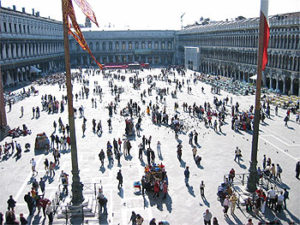 In 2020, for the first time in 500 years, visitors to Venice will be able to tour one of its grandest and most important buildings. The Procuratie Vecchia housed the nine governors of La Serenissima, the Most Serene Republic, in the centuries of its greatest power, from its construction in 1532 onward.
In 2020, for the first time in 500 years, visitors to Venice will be able to tour one of its grandest and most important buildings. The Procuratie Vecchia housed the nine governors of La Serenissima, the Most Serene Republic, in the centuries of its greatest power, from its construction in 1532 onward.
Making up one side of famed St. Mark’s Square, the Procuratie Vecchia is Venice’s longest building. The multi-million Euro renovation will be led by British architect Sir David Chipperfield under the auspices of insurance company Assicurazioni Generali, which kept its headquarters in the Procuratie from the mid-nineteenth century until recently.
The insurers have said that the completed space will house “a new initiative to help disadvantaged peoples of the world,” according to The New York Daily News. “The idea is to create something in Venice that doesn’t rely on tourism,” said Matthew Newton, a representative of Generali. “This building has been closed to visitors for more than 500 years. From the upper floors you will be able to see the lagoon. It will open up new vistas on Venice.”
Chipperfield brings deep expertise in historical remodeling to this task, which includes nearly 12,000 square feet and numerous frescoes and other types of painting. He is responsible for, among other projects, The River and Rowing Museum in Henley-on-Thames, England; Berlin’s Neues Museum; The Saint Louis Art Museum in Missouri; and, in Mexico City, the Museo Jumex.
He told Designboom magazine in 2014 that “you have to be responsive to the circumstances of a project,” and in the case of the Procuratie Vecchia, this means that the celebrated Jacopo Sansovino façade, with its 52 stone arches, will remain untouched. “This is a building with a monumental presence in a monumental square which the whole world loves,” said Sir David. “It is part of the only big civic space in Venice. It’s got an amazingly theatrical presence.”
Plans for the renovations include opening up a hidden passageway over a canal leading from St Mark’s Square to the Royal Gardens, which will also undergo some restoration. Since all materials will have to be brought in and removed by canal barges, access will be made through previously closed courtyards and by a newly constructed drawbridge over one canal, maintaining as much regular water traffic around St. Mark’s Square as possible over the next three years.
— Kathy McCabe
